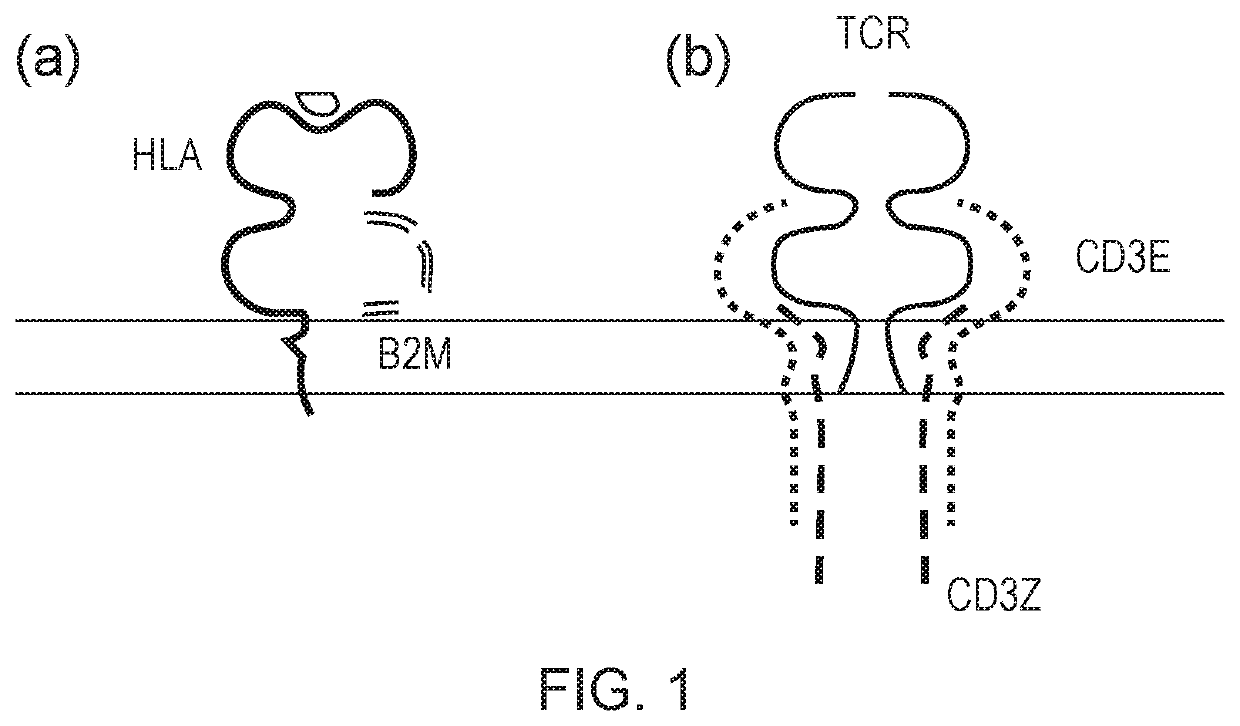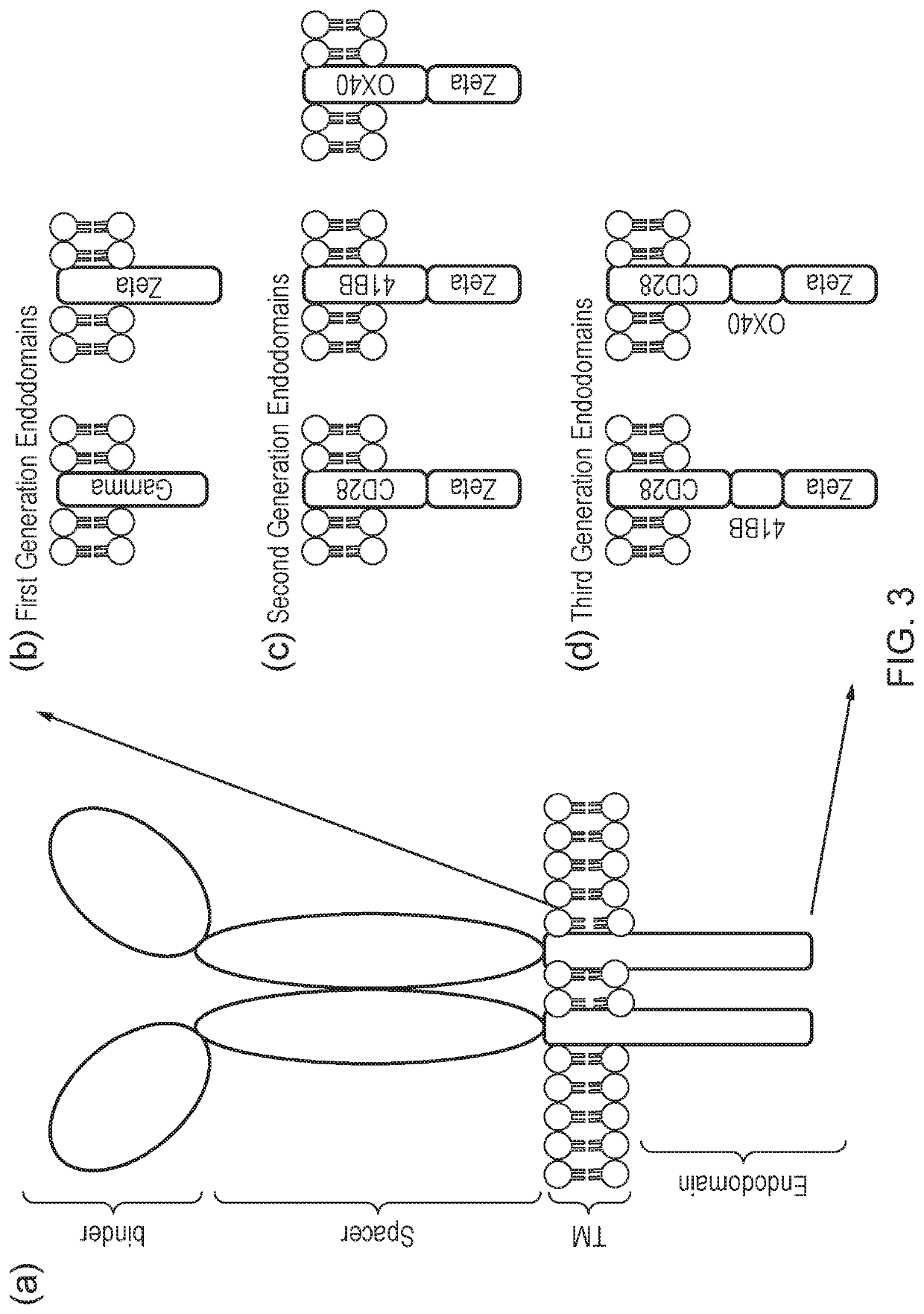Cell
a cell and cell technology, applied in the field of cells, can solve the problems of insufficient t-cells for generating car t-cell products, nk cell rejection, and disruption of peptide/hla presentation, and achieve the effect of reducing the immune response of the cellular cell of the present invention
- Summary
- Abstract
- Description
- Claims
- Application Information
AI Technical Summary
Benefits of technology
Problems solved by technology
Method used
Image
Examples
example 1
Demonstration of Reduced Allo-Reactivity in a Mixed Lymphocyte Response Assay
[0255]Mixed Lymphocyte response (MLR) assays are classical assays which are used to determine allo-reactivity. Normal donor T-cells are transduced with a retroviral vector which expresses a CD19 CAR co-expressed with B2M-CD3 zeta endodomain (B2M-Z) constructs. T-cells from the same donor are also transduced with a retroviral vector which just expressed the CD19 CAR. These CAR T-cells or CAR / B2M-Z T-cells are irradiated and repeatedly co-cultured with T-cells from another normal donor who is MHC mismatched. The mismatched T-cells are loaded with tritium which allows counting in response to allo-antigens. After repeated co-culture, the CAR T-cells will have greater allo-responses compared with the CAR / B2M-Z T-cells.
example 2
Demonstration of Reduced Immunogenicity in an Immunocompetent Animal Model
[0256]A CAR T-cell cassette is generated which is particularly immunogenic by co-expression of an immunogenic factor such as OVA protein or HSV-TK. In a second CAR T-cell cassette the identical CAR and immunogenic protein are co-expressed along with B2M-Z. Murine splenocytes are transduced with above constructs. Syngeneic mice are conditioned with low-dose total body irradiation and transduced splenocytes are infused. Engraftment and persistence of CAR T-cells is determined by flow cytometry. Immune responses to the immunogenic factor are determined by ELISPOT. Inclusion of the B2M-Z component is expected to enhance engraftment and reduce immune-responses.
example 3
Demonstration of Reduced Allogeneic Response in a Haploidentical Transfer Model
[0257]BALB / C BLACK6 mice are crossed to result in an F1 hybrid. Engraftment of T-cells from an F1 hybrid mouse would normally result in their rejection after administration to a BalB / C mouse due to recognition of BalB / C MHC molecules. F1 CAR T-cells expressing anti murine CD19, and F1 CAR T-cells expressing both anti-murine CD19 CAR as well as B2MZ are administered to a BalB / C mouse after low-dose total body irradiation. Engraftment is studied serially by bioluminescence imaging and after termination by flow-cytometry.
PUM
 Login to View More
Login to View More Abstract
Description
Claims
Application Information
 Login to View More
Login to View More - R&D
- Intellectual Property
- Life Sciences
- Materials
- Tech Scout
- Unparalleled Data Quality
- Higher Quality Content
- 60% Fewer Hallucinations
Browse by: Latest US Patents, China's latest patents, Technical Efficacy Thesaurus, Application Domain, Technology Topic, Popular Technical Reports.
© 2025 PatSnap. All rights reserved.Legal|Privacy policy|Modern Slavery Act Transparency Statement|Sitemap|About US| Contact US: help@patsnap.com



